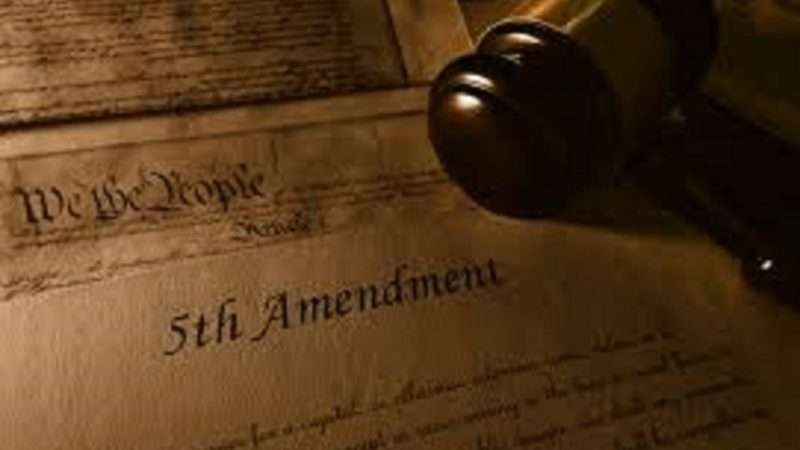

The Supreme Court’s 2005 decision in Kelo v. City of New London, which upheld the use of eminent domain to take homes for transfer to a private developer in order to promote “economic development,” rekindled a two-hundred year long debate over the Takings Clause of the Fifth Amendment. The Amendment mandates that private property must not be “taken for public use, without just compensation.” Nearly all participants in the longstanding debate over the meaning of this phrase have assumed that takings for purposes other than public uses are simply forbidden—even if compensation is paid.
They disagreed over whether the correct interpretation of “public use” is what I have called the “broad view”—under which virtually any potential public benefit qualifies—or the narrow view, under which a public use only exists if the condemned property is transferred to government ownership (as in the case of public infrastructure such as roads) or to a private owner that is legally obligated to serve the entire public.
There is plausible originalist evidence for both sides in this debate. In my book, The Grasping Hand: Kelo v. City of New London and the Limits of Eminent Domain, I describe how the evidence for the narrow view is, overall, much stronger than that backing the broad alternative (see also my brief summary here).
But even if I’m wrong about that, this is still a debate in which both sides admit that “public use” imposes at least some constraints on the range of purposes for which government can condemn private property. Advocates of the broad view admit there can be extreme cases where a taking runs afoul of public use limits. For example, the Kelo majority opinion concedes that “pretextual takings”—condemnations where the official rationale is obviously a smokescreen for a scheme to benefit a private party—are still unconstitutional (though it is extremely unclear about how courts should determine what qualifies as a pretextual condemnation).
In a thoughtful recent post on this issue, co-blogger Jonathan Adler embraces a much more radical defense of the result in Kelo. Rather than defending the broad view of public use, he argues that the term “public use” simply doesn’t constrain takings at all:
The first thing to note is that in the Takings Clause itself, “public use” is not written as a limitation. The text does not read “nor shall private property be taken other than for public use.” Rather it identifies a type of taking—those “for public use”—that require compensation. “Public use” is used to differentiate a subset of takings. It is not written as a requirement or limitation.
Read in the context of the full amendment, this makes sense, for there are all sorts of takings or property for which compensation is not required, including taxes, fines, and seizures. Those takings require due process, but do not require “just compensation.” It is when property is taken for a public purposes (as opposed to as a punishment or as an exaction) that compensation is required. To restate: The text requires Due Process for all takings of property, and then requires compensation for the subset of takings that are “for public use.” Like it or not (and I most definitely do not) this is the most straight-forward reading of the constitutional text, and there is little historical or other evidence to the contrary.
This is not a completely new theory. It has been defended by a few modern legal scholars, most notably in a 1993 article by Jed Rubenfeld. But, despite Jonathan’s assertion to the contrary, there is in fact overwhelming evidence against it. The key point is simply this: No significant jurist or legal commentator in the Founding era embraced it during the Founding era, or for many decades thereafter. Significantly, nineteenth-century advocates of broad eminent domain power (and court decisions endorsing it) did not advance this theory. They instead argued for the broad view of public use.
If the Rubenfeldian approach were truly in accordance with original meaning, one would expect people at the time to note that and to deploy it as an argument for wide-ranging use of eminent domain. While federal government takings were rare during this period, most state constitutions had public use clauses with identical or similar wording to the federal one. Takings by state and local governments generated extensive public use litigation. Yet the Rubenfeld theory is conspicuous by its absence in this period.
The closest thing we have to a judicial endorsement of the Rubenfeld theory is a belated one Justice John Paul Stevens, the author of the Kelo majority opinion. After he retired from the Court in 2010, Stevens came to realize that his defense of the broad view of public use in Kelo was in part based on what he called an “embarrassing to acknowledge” error in interpretation of precedent. In retirement, Stevens instead shifted to defending Kelo based on a theory similar to Rubenfeld’s. But one retired justice’s view is not much of a legal precedent, and certainly doesn’t tell us anything of use about the original meaning.
In Chapter 2 of The Grasping Hand, I included a critique of Rubenfeld’s theory. Here is an excerpt:
As a purely textual interpretation of the Fifth Amendment, Rubenfeld’s reading is plausible. However, it is at least equally plausible to interpret the text as implicitly assuming that takings for private uses are forbidden, and therefore there is no need to provide compensation for them. That assumption is compatible with the natural law understanding of property rights common at the time of the Founding, which held
that government inherently lacked power to engage in naked transfers of
property “from A to B.”From the standpoint of originalism, as opposed to pure textualism, Rubenfeld’s argument is weaker still. Without exception, eighteenth- and early nineteenth- century court decisions and statements by the Founders themselves assumed that takings required compensation regardless of whether the property was transferred to government ownership or not….
Allowing government unrestrained authority to transfer property from one private individual to another without even paying compensation also conflicted with the founding generation’s generally strong emphasis on property rights. It seems strange, to say the least, that the Founders would have required compensation for takings needed for even the most essential public uses but no protection at all against takings for even the most blatant private ones.
As Jonathan notes, many originalists argue that the original meaning of the Bill of Rights that binds us today is not that of 1791 (when the first ten amendments were originally enacted), but that of 1868, when the Fourteenth Amendment first made the Bill of Rights applicable to state and local governments (which conduct the vast majority of takings). In this period, we have far more evidence about the original meaning of “public use” than the 1790s. And a large majority of it supports the narrow view. That was the position endorsed by a large majority of state supreme courts during that era, and by most prominent legal treatises. It also best fits with the purposes for which the Framers of the Fourteenth Amendment sought to “incorporate” the Takings Clause against the states. The state-court interpretations of state public use limitations are relevant to the federal one, because almost all involved state constitutional provisions based on the Fifth Amendment, and with similar or identical wording. The reasoning behind them almost always rested on the general nature of “public use,” rather than on considerations specific to a particular state. I discuss these issues in far greater detail in my book.
During the period surrounding 1868, there was still a considerable minority of courts and prominent legal commentators who endorsed the broad definition of “public use.” But the Rubenfeld theory was, once again, conspicuous by its absence.
A number of other considerations also count against the Rubenfeld theory. For example, if “public use” does not constrain the reasons why property may be taken, but merely indicates which takings require compensation, then that leads us to the absurd conclusion that even the most egregious takings for private interests do not require compensation, while takings for even the most important public infrastructure do.
In his post, Jonathan suggests that the phrase “public use” may differentiate one category of taking that requires compensation from others, such as taxes, fines, and seizures, that only require “due process.” But then, as today, taxation and the imposition of fines for lawbreaking were not regarded as takings of property at all. By contrast, seizures unrelated to taxation, fines, or some types of exercise of the “police power,” generally were regarded as takings of private property, and thus did require compensation. Indeed, one of the purposes of the Takings Clause was to prevent a recurrence of uncompensated seizures of property that had occurred under British colonial rule and during the Revolutionary War.
Jonathan doesn’t totally reject the possibility that the 1868 understanding of “public use” imposes constraints on the eminent domain power. So perhaps there is less disagreement between us than might initially seem to be the case.
There are plausible originalist justifications for Kelo, though I think the originalist evidence on the other side is ultimately much stronger. But the Rubenfeld theory is a weak one, and one radically at odds with the available evidence, and with many decades of precedent.
from Latest – Reason.com https://ift.tt/3hwznAA
via IFTTT